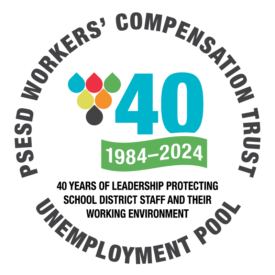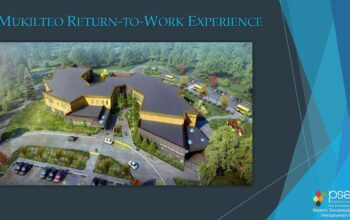By Clairmonte Cappelle, Executive Director

Introduction
National Perspective
COVID-19 has produced the most challenging market faced by the industry in over 15 years. We are experiencing significant price increases, deductible changes, or reduced coverage from carriers. Weather-related loss events, and rates not keeping up with losses, have contributed to a “hard market” where there are tighter underwriting controls resulting in premium and retention increases and a decrease in capacity for most types of insurance. Our risk profile is an excellent one. We were able to secure a 2-year renewal with no retention increase (currently at $500K since 2013) and a nominal premium increase. We are also seeing the impact of social Inflation on a hard market as this emerging risk is driving insurance losses due to factors such as higher jury awards, corporate mistrust, and rising compensation levels.
Nationally, we are seeing ongoing increases in severity trends over the last 4-5 years. Claims are reaching the $1M to $3M threshold in a shorter period of time (18 months). We are still seeing the impact of medical technology and advancement contributing to claim severity as therapies once considered futuristic are now a reality. Add inflation, attendant care, and survivable injuries at high medical cost therapies, and we have a sustainable increased severity trending in the years to come.
We can expect insurers to feel the pressure to raise self-insured retentions in response to this increasing severity trend as mega claims of $3M+ become more frequent. While low in frequency, accounting for only 4% of the claims nationally, these “migratory” or “shock” claims” are rising in severity, accounting for more than 40% of ultimate loss.
PSWCT Perspective
The state of the Trust remains strong financially and programmatically. We continue to build on previously demonstrated strengths as well as pursue identified opportunities. Total net fund position was strengthened by $7.8M, driven by pandemic-related fewer claims and actuarially determined favorable reserve developments in current fiscal year ending 8/31/2021 ($3.589M) and prior fiscal years ($2.586M). As a result, the Trust fund balance grew to $38.8M which is reserved to pay for long-tailed claim exposures associated with workers’ compensation claims and to meet actuarially determined capital needs. This capital provides “cushion” to absorb unforeseen catastrophes. Our capital adequacy for these unforeseen events is modeled to address at least two 1-in-50 year events and is actuarially set at $41.2M.
Programmatically, we have implemented strategic partnerships to strengthen our services to our members. We expect to transition the WCT NURSe program, currently in pilot phase and led by Heidi Palmer, Account Manager, to our full membership during the next school year. The program aims to humanize the claims experience for injured workers at the outset by providing access to a medical professional 24/7. Our Physical Ability Evaluation Program, led by Steve Lyons, Loss Control Consultant, aims to mitigate injuries by ensuring that selected candidates for our high claim frequency positions (custodian, bus drivers, dietary, special education, etc.) can perform the physical requirements of the position before the hiring decision is finalized.
Effectiveness and efficiencies in our service delivery extends to our analytics and reporting capabilities aimed at providing on-demand claims and risk information about your specific experience. Carrie Angle, Sr. Applications Specialist, has done some excellent work in this area. More to come about the launching of this service.
Pathway to Change Alignment
Last year, I shared with the Executive Advisory Board and our members through Sound Advice our Pathway to Change, which is a roadmap that aligns our claims and risk management work with our Agency’s vision of Success for Each Child and Eliminate the Opportunity Gap by Leading with Racial Equity. Our work is centered around the 4 tracts that make up that roadmap with short-term, intermediate term, and long-term goals. I would like to update you on where we are in our Pathway to Change work.
Transformational Relationship Experience
The purpose of our transformational relationship experience work is to create a consistent, high-quality experience for school districts and injured workers. Our method for monitoring our work towards this end is through periodic school district and injured worker surveys to evaluate service experience. I am pleased to report that we have met the established 90% satisfied/very satisfied benchmark based on survey responses to service-related questions.
The Trust will be soliciting your feedback shortly on how we can hold ourselves accountable to the communities that we serve, including how we can strengthen our work with you in ways that are racially equitable and culturally responsive and supportive of our collective racial equity leadership. We welcome your feedback on our work together. We hope this information will support relationship building, learning and accountability among the Trust and our school district partners.
Educational Continuity
The aim of our educational continuity work is to support school district staffing consistency and stability through injury/illness prevention and averting unnecessary disability duration. Our method for measuring our progress towards this end is two-fold. For preventing injury/illness, we monitor claim frequency, and for mitigating days out of work due to an injury, we monitor time-loss claims, days, and dollars.
I am pleased to report that while the insured exposure as measured in worker hours has increased 15% since 2011, on the aggregate, we continue to experience a favorable downward trend in time-loss claim counts paid (averaging 518 claims) and disability days paid per claim (averaging 96 days) during the fiscal year. Average cost per disability day is $71 over the same 10-year period.
Responsible Stewardship
The purpose of our work around the responsible stewardship tract is to protect and make prudent use of entrusted resources by facilitating the implementation of best-practice injury prevention and risk-reduction strategies. This includes implementing cost containment and incentive programs to reduce our school district members total cost of insured risk. Our measure of progress to which we are holding ourselves accountable, in additional to our financials, includes base rate changes, loss rate, time-loss claim closure rate, and ultimate incurred.
Our Return-to-Work Incentive Program, led by Aliza Hauser, Return-to-Work Manager, allocates up to $1.8M equitably among our school district members to accommodate injured workers in a transitional role. During the last fiscal year, 39% of eligible claims and 13% of eligible dollars were reimbursed, a slight improvement over the prior year.
The fund year loss rate for the Trust, as measured by the actuarially determined ultimate loss incurred per worker hour insured, continued a favorable downward trend since 2011 averaging $260 for every 1000 worker hours insured. Time-loss claim closure rate within the fiscal year incurred continues a favorable upward trend averaging 54% over the past 2 fiscal years. Ultimate Loss Incurred trending, despite increased insured exposure, remained stable.
Upon recommendation of leadership and with the support of the Executive Advisory Board, no change was recommended to the base rate (0% increase) for the 2021-22 fiscal year. The annual average base rate increase since 2011 is less than 1%.
Employee Experience
Lastly, our employee experience tract focuses on cultivating a culture that fosters staff engagement and encourages best work with the goal of developing skill and capacity to deliver culturally responsive claims and risk management services. Annual surveys are administered to gauge the level of workplace satisfaction of staff. Our benchmark is survey responses that indicate a 90% satisfaction.
I am pleased to report that we have met the established 90% satisfied/very satisfied benchmark based on survey responses.
Next Steps
We will be continuing the efforts around our Pathway to Change with a focus on providing culturally responsive services and monitoring performance against expectations. An example of this as stated on the Pathway is to utilize the voluntarily submitted injured worker heritage information to inform services such as translation and interpreter services and ensuring that an injured worker’s action plan is infused with cultural responsiveness.
Through strengthening our business analytics capabilities, we will push actionable information to member districts to inform decision-making. We will bolster our Client Relations team by recruiting a Director to strategically support the account management, loss control, and industrial hygiene functions by further aligning our services with school districts’ needs.
We will continue to build a culture that supports the best team in the business; amazing, dedicated, and committed colleagues who bring out the best in each other. I and the WCT/UP leadership team will strive to provide a nurturing environment towards this end by cultivating a team that embraces their roles through demonstration of job-specific and anti-racist leadership competencies in service to our member school districts.



